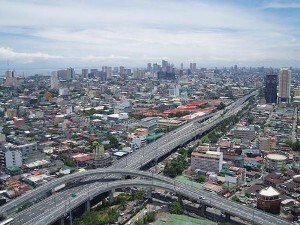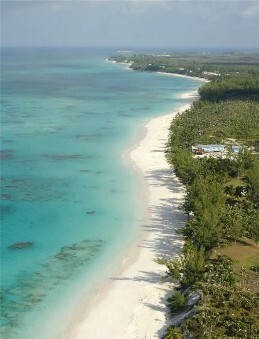THE Haitian immigration in Brazil it came from the social scenario experienced in Haiti, which reveals a serious humanitarian crisis, political conflicts and economic collapse. In addition to this context, the country has faced several natural disasters, which have intensified from of the year 2004 and made the United Nations (UN) intervene in the country with reinforcement military.
Also in 2004, Haiti suffered from rains that destroyed the country, killing about 16 thousand people. As if this episode were not enough, the country also faced, in that same year, hurricane Jeanne, which affected approximately 300 thousand people. In 2008, the Haitian people suffered from hurricanes Gustav and Hanna, which left hundreds of people in an emergency situation. In 2010, Haiti was hit by the earthquake most serious in its history, which destroyed Port-au-Prince, the country's capital, leaving around 220 thousand people dead.
Why did Haitians come to Brazil?

In 2010, an earthquake devastated Haiti, killing thousands of Haitians.*
In 2010, Haiti found itself immersed in a major natural disaster: a magnitude 7 earthquake on the Richter Scale, with an epicenter near the capital Port-au-Prince, hit the country. This earthquake devastated Haitian territory, leaving more than 300,000 dead according to a review presented by Haitian Prime Minister Jean-Max Bellerive. According to data from the Red Cross, about 3 million Haitians suffered the consequences of this earthquake.
Know more:Can earthquakes occur in Brazil?
Haiti is a country that faces humanitarian problems, such as poverty and hunger, which is why it has difficulties in getting back on its feet in the face of catastrophes. Natural tragedies and the consequent devastation associated with political and socioeconomic crises motivated thousands of Haitians to move to other countries. Hoping for new job opportunities and better living conditions, the Haitians chose Brazil as one of their main destinations.
The scenario in Brazil, at the time, was very attractive, as the country would host the World Cup, therefore, works to attend the event were in full swing. Thus, Haitians hoped to find insertion in the labor market here, especially in civil construction.
Read more:Immigration in Brazil
How did the Haitians arrive in Brazil?

Immersed in political and economic crises and facing a situation of misery, many Haitians migrated to Brazil in search of better living conditions.**
The entry of immigrants from Haiti into Brazil took place through paths that crossed countries such as Ecuador, Peru and Bolivia. The Northern region of Brazil, mainly the state of Acre, was the gateway for Haitians to Brazilian territory. The intense migratory flow of Haitians through the state of Acre mainly affected the city of Brasileia.
According to data from the Federal Police, approximately 72,000 Haitians arrived in Brazil between 2010 and 2015. In 2010, initially, the number of immigrants was limited to 595; in 2014, that number rose to 30,000. It is noteworthy that part of these immigrants left the country during the same period. Thus, in 2015, a balance of approximately 60 thousand immigrants from Haiti settled here.
Many asylum requests were made, but they were refused for not meeting the specifications of Conare (National Committee for Refugees). Through the National Immigration Commission (CNIg), the Brazilian government granted housing to Haitians, as it was a humanitarian issue.
Initially, the Haitians settled in the state of Acre, however, the majority dispersed throughout the Brazilian territory. A large part of the immigrants settled in the South and Southeast regions of Brazil, seeking employment opportunities and improved living conditions.
How do Haitians live in Brazil?
According to data provided by the Ministry of Labor, the participation of the Haitian workforce in the formal labor market increased by around 406% between the years 2011 and 2012. Between 2012 and 2013, this share increased by 254%. However, despite being employed and formally working with documentation of permanence in Brazil, the inclusion of these immigrants was the responsibility of the solidarity of some institutions, such as philanthropic ones.
Despite the opening of doors for the entry of these immigrants in Brazil and the possibility of legalizing work in the country, Haitians could hardly get a regulated job and were therefore explored. This contradiction generated a dramatic scenario, in which the marginalization of these immigrants, the exploitation of their labor and the intensification of informal jobs are observed.
The lack of opportunities and the situation of marginality in which many immigrants began to live Haitians in Brazil made them start looking for new routes in search of better opportunities. According to Marília Pimentel, a professor at the Federal University of Rondônia, the crisis experienced in Brazil and the problems triggered by numerous unfinished works from the World Cup caused many Haitians to migrate to other countries, such as the United States, Mexico and Chile. Barack Obama, former president of the United States, granted, during his administration, work visas to immigrants, which attracted Haitians who were in poverty in Brazil.
According to human rights organizations, the reception of immigrants was disorganized by the federal government. There was a lack of union between the municipal, state and federal spheres in order to promote integrative policies that insert these immigrants into the labor market, into social and cultural life and into programs for access to health and education.
Consequences of Haitian immigration in Brazil
The main consequence of the intense Haitian migratory flow to Brazil was the burden felt by the government of Acre. The situation was considered chaotic, as the cities of Acre were unable to absorb this migratory mass that came in search of new opportunities and quality of life. This non-absorption created a scenario of calamity, which left many Haitians marginalized. In addition, this situation affected the lives of local inhabitants, since, according to representatives of the Acre government, there was a lack of food and basic supplies for survival. This lack of organization led the government of Acre to close numerous shelters and send immigrants to the state of São Paulo.
In mid-2015, there was a 96% reduction in illegal Haitians in Brazil, who began to be attracted to other countries, such as the United States and Mexico. Acre is no longer the main entry route for these immigrants, who found a way to enter Brazilian territory in states like Mato Grosso do Sul. This new path partially relieved public services in Acre.
Brief history of Haiti
Located in Central America, Haiti is a Caribbean country colonized by the Spanish throughout the 15th century. Soon after this period, it was also colonized by the French. The presence of settlers represented years of slavery, epidemics, exploitation and decimation of the Haitian people. The arrival of slaves to Haiti made the country very productive, but fragile. This scenario generated numerous revolts in the country. Haiti's independence came in 1804 after Napoleon's army was defeated.
The colonial roots established political and economic instability in Haitian territory, which are recurrent to this day. Therefore, it is common for this country to be highlighted for political issues, economic crises and for facing natural tragedies.
Read too:Who are the people who migrate to Brazil
_____________
*Image Credits: arindabanerjee / Shutterstock
**Image Credits: arindabanerjee / Shutterstock


